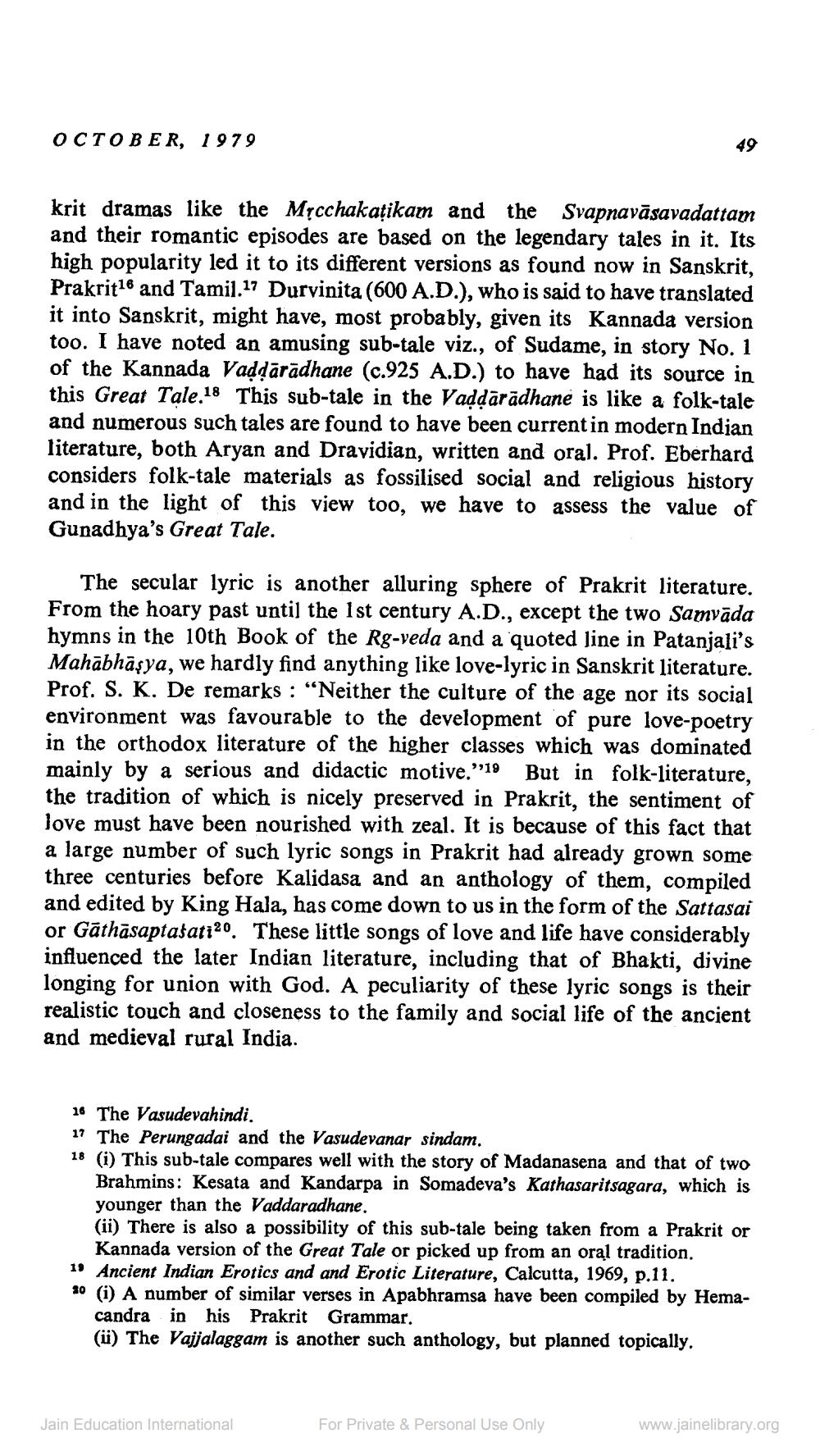________________
OCTOBER, 1979
krit dramas like the Mṛcchakatikam and the Svapnavāsavadattam and their romantic episodes are based on the legendary tales in it. Its high popularity led it to its different versions as found now in Sanskrit, Prakrit16 and Tamil.17 Durvinita (600 A.D.), who is said to have translated it into Sanskrit, might have, most probably, given its Kannada version too. I have noted an amusing sub-tale viz., of Sudame, in story No. 1 of the Kannada Vadḍārādhane (c.925 A.D.) to have had its source in this Great Tale.18 This sub-tale in the Vaddārādhane is like a folk-tale and numerous such tales are found to have been current in modern Indian literature, both Aryan and Dravidian, written and oral. Prof. Eberhard considers folk-tale materials as fossilised social and religious history and in the light of this view too, we have to assess the value of Gunadhya's Great Tale.
49
The secular lyric is another alluring sphere of Prakrit literature. From the hoary past until the 1st century A.D., except the two Samvada hymns in the 10th Book of the Rg-veda and a quoted line in Patanjali's Mahabhaşya, we hardly find anything like love-lyric in Sanskrit literature. Prof. S. K. De remarks: "Neither the culture of the age nor its social environment was favourable to the development of pure love-poetry in the orthodox literature of the higher classes which was dominated mainly by a serious and didactic motive."19 But in folk-literature, the tradition of which is nicely preserved in Prakrit, the sentiment of love must have been nourished with zeal. It is because of this fact that a large number of such lyric songs in Prakrit had already grown some three centuries before Kalidasa and an anthology of them, compiled and edited by King Hala, has come down to us in the form of the Sattasai or Gāthāsaptasati20. These little songs of love and life have considerably influenced the later Indian literature, including that of Bhakti, divine longing for union with God. A peculiarity of these lyric songs is their realistic touch and closeness to the family and social life of the ancient and medieval rural India.
16 The Vasudevahindi.
17 The Perungadai and the Vasudevanar sindam.
18 (i) This sub-tale compares well with the story of Madanasena and that of two Brahmins: Kesata and Kandarpa in Somadeva's Kathasaritsagara, which is younger than the Vaddaradhane.
(ii) There is also a possibility of this sub-tale being taken from a Prakrit or Kannada version of the Great Tale or picked up from an oral tradition.
19 Ancient Indian Erotics and and Erotic Literature, Calcutta, 1969, p.11.
30 (i) A number of similar verses in Apabhramsa have been compiled by Hemacandra in his Prakrit Grammar.
(ii) The Vajjalaggam is another such anthology, but planned topically.
Jain Education International
For Private & Personal Use Only
www.jainelibrary.org




